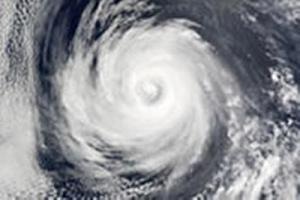Nov 20 2018
A new research offers one of the most complete assessments yet of the impact of the simultaneous occurrence of many climate hazards. This study exposes that societies face a much greater threat from climate change than preceding studies have indicated.
 The paper studied the impact of multiple climate change events simultaneously. (Credit: University of Southampton)
The paper studied the impact of multiple climate change events simultaneously. (Credit: University of Southampton)
The analysis of numerous scientific papers reveals 467 ways in which human health, water, food, economy, security, and infrastructure have been affected by numerous climatic changes including warming, wildfires, heat waves, drought, precipitation, storms, floods, sea level rise and changes in ocean chemistry and land cover.
The research, reported in Nature Climate was led by Camilo Mora of the University of Hawaii and co-authors include Professor Justin Sheffield from the University of Southampton. Professor Sheffield’s research into how climate and water interact over time in various locations was used to examine where droughts may happen in the future and what their influence could be.
The great majority of recent studies into the increasing dangers of climate hazards have studied the effects of each hazard independently. However concentrating on just a few hazards may ignore the collective impact they have with other hazards, resulting in inadequate assessments of the consequences of climate change on societies.
Continuing greenhouse gas emissions are said to raise the atmospheric temperature, in turn resulting in wildfires, drought, and heat waves in usually dry places or massive rain and floods in usually wet areas. In the oceans, warmer waters also evaporate faster increasing wind speeds and the downpours of hurricanes, whose surges can be intensified by sea level rise. Consequently, greenhouse gas emissions can aggravate concurrently many climate hazards.
The research specifies how these dangers have already impacted human health, water availability, food, and infrastructure including electricity, “lifeline” services such as water and sewage lines, and transportation. Climate hazards also have caused economic losses including agricultural losses, property damage, and job losses, all while triggering several cases of violence and migrations.
This research indicates that we should not expect a future of individual hazards such as heat waves or droughts, but one in which we should be prepared for the impacts of multiple types of climate hazards at the same time, even in the UK.
Justin Sheffield, Professor, University of Southampton
“For example, London and the South East of the country can expect more than one concurrent climate hazard by the end of this century if greenhouse gases are strongly mitigated, and three if they are not, including sea level rise, warming, more severe drought and precipitation extremes, and even freshwater deficit.”
The research also revealed that by the year 2100, New York will have to deal with the equivalent of one climate hazard, if greenhouse gas emissions are strongly diminished or four if they are not, including extreme precipitation and sea-level rise. Los Angeles will deal with three simultaneous climate hazards, Mexico City will face four, and the Atlantic coast of Brazil will have to deal with five. Even under robust mitigation circumstances, increasing cumulative exposure to the multitude of climate hazards will affect poor and rich countries alike and particularly in tropical coastal areas.
“Greenhouse gas emissions pose a broad threat to humanity by simultaneously intensifying many hazards that have proven harmful in the past” says lead author Camilo Mora of the University of Hawaii.
The collision of cumulative climate impacts is not something on the horizon, it is already here. Last year, for instance, Florida recorded extreme drought, record high temperatures, over 100 wildfires, and the strongest ever recorded hurricane, the category 4 Hurricane Michael.
Camilo Mora, Researcher, University of Hawaii
The paper concludes: “Overall, our analysis shows that ongoing climate change will pose a heightened threat to humanity that will be greatly aggravated if substantial and timely reductions of greenhouse gas emissions are not achieved.”